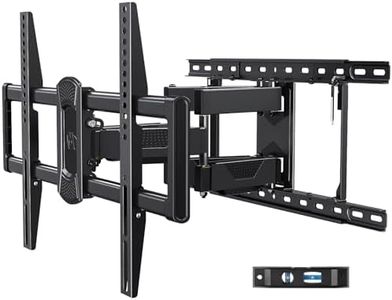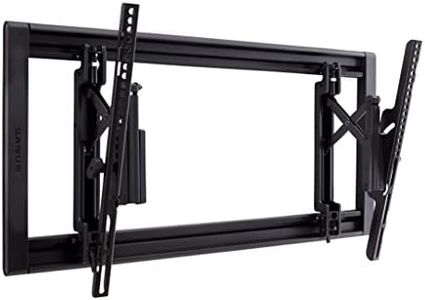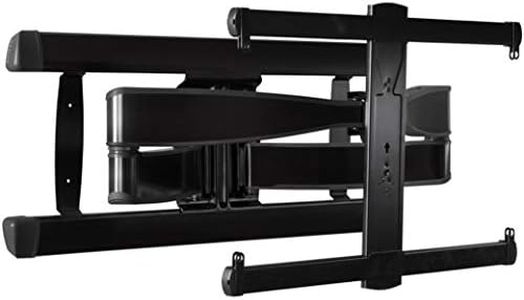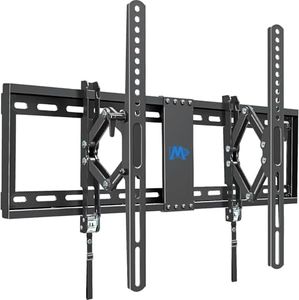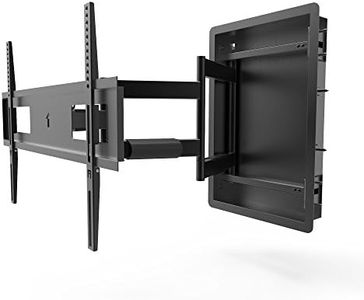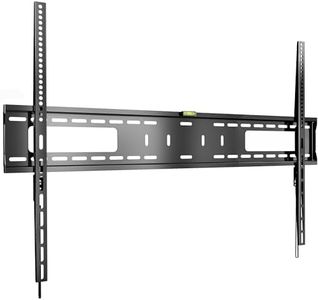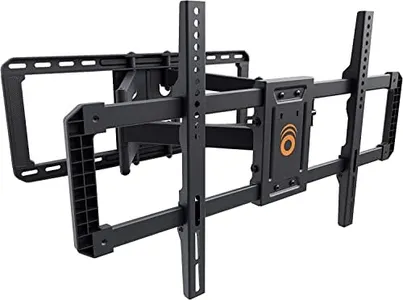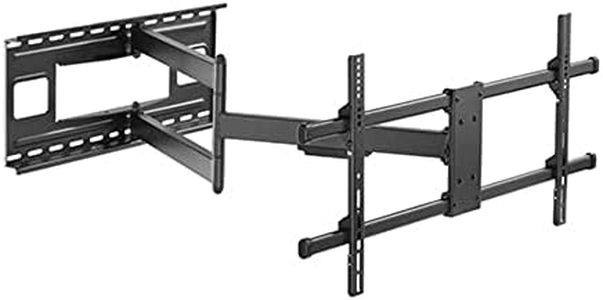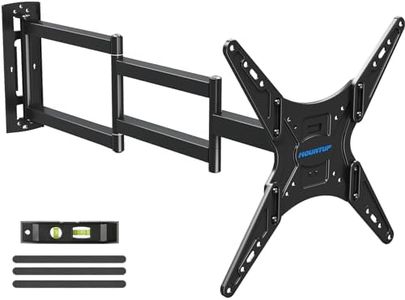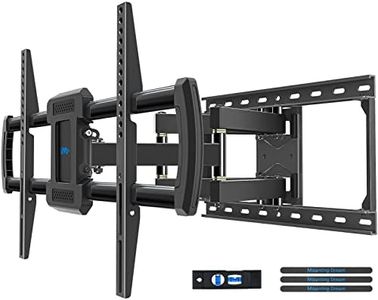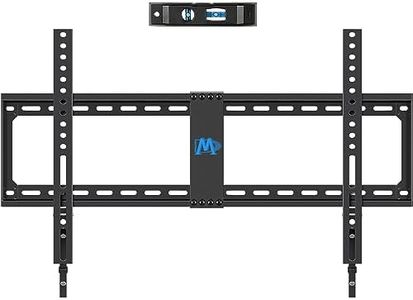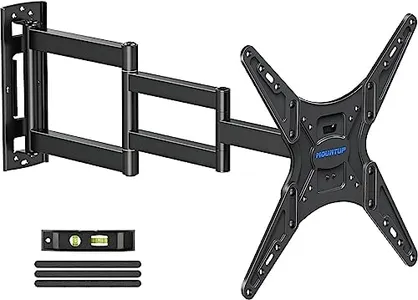We Use CookiesWe use cookies to enhance the security, performance,
functionality and for analytical and promotional activities. By continuing to browse this site you
are agreeing to our privacy policy
10 Best TV Wall Mounts
From leading brands and best sellers available on the web.Buying Guide for the Best TV Wall Mounts
Choosing the right TV wall mount is about making sure your television is securely supported and positioned in a way that suits your viewing preferences and room layout. Because TVs come in various sizes and weights, and everyone’s home is different, it’s important to know what to look for when picking the best wall mount. Understanding key features helps you match your wall mount choice to your TV and the kind of viewing experience you want.TV Size and Weight CompatibilityThis refers to the range of TV sizes (usually measured in inches diagonally) and maximum weight that the wall mount can support. It's important because choosing a mount that doesn't match your TV's size or exceeds its weight limit can be unsafe and may damage both your TV and wall. Mounts are usually grouped by supported TV sizes (like 32-55 inches, 40-70 inches, etc.) and weight capacities (usually listed in pounds or kilograms). Always check your TV's specifications and choose a mount that comfortably exceeds both the size and weight; being too close to the mount's maximum limit isn't safe.
Mount Type (Fixed, Tilting, Full-Motion/Articulating)Mount type describes how much movement the mount allows after installation. Fixed mounts keep the TV flat against the wall and don’t allow movement; these are good if you always watch from one spot. Tilting mounts allow the TV to tilt up or down, helping reduce glare or adjust for higher/lower mounting spots. Full-motion or articulating mounts offer the most flexibility—they let you pull the TV away from the wall, swivel it left or right, and tilt as well. Choose fixed if you want a slim look and always watch from straight ahead, tilting if you need to slightly adjust the vertical viewing angle, and full-motion if you want to watch from different areas of the room or need to reach TV connections easily.
VESA CompatibilityVESA refers to the standardized mounting hole pattern on the back of your TV, usually described in millimeters (like 200x200, 400x400, etc.). This is important because your wall mount must fit the holes on your TV to attach it securely. TVs and mounts list their VESA patterns in their specs. To find the right mount, check your TV's manual or measure the distance between the mounting holes, then pick a mount that matches your TV's VESA pattern.
Wall Type CompatibilityNot all wall mounts are suitable for all wall types. Some are designed specifically for wooden studs, others for concrete, brick, or drywall. It's important to match your wall mount to your wall construction for safety and stability. Most mounts will list compatible wall types, and using incompatible mounts can lead to accidents. Figure out where you want to mount your TV and what your wall is made of—pick a mount suitable for that material and make sure you have the right hardware for a secure installation.
Profile and TV-to-Wall DistanceThis spec tells you how close the TV sits to the wall when mounted. A low-profile mount holds the TV very close to the wall, which looks sleek but may limit access to ports. Some tilting or full-motion mounts have a larger gap between the TV and wall, which can make it easier to reach cables. Think about whether you’ll need to frequently access the back of your TV—if not, a slim mount is more discreet; if you’ll often plug/unplug things, a mount with more distance or arm extension is helpful.
Cable Management FeaturesCable management is about how the mount helps you organize or hide cables so your installation looks tidy. Some mounts include clips or channels to keep cables together and conceal them along the arms or bracket. This is mainly about looks and organization—if you care about a clean appearance and want to avoid tangled wires, look for mounts with built-in cable guides. If this isn’t as important to you, basic mounts without these features will suffice.
